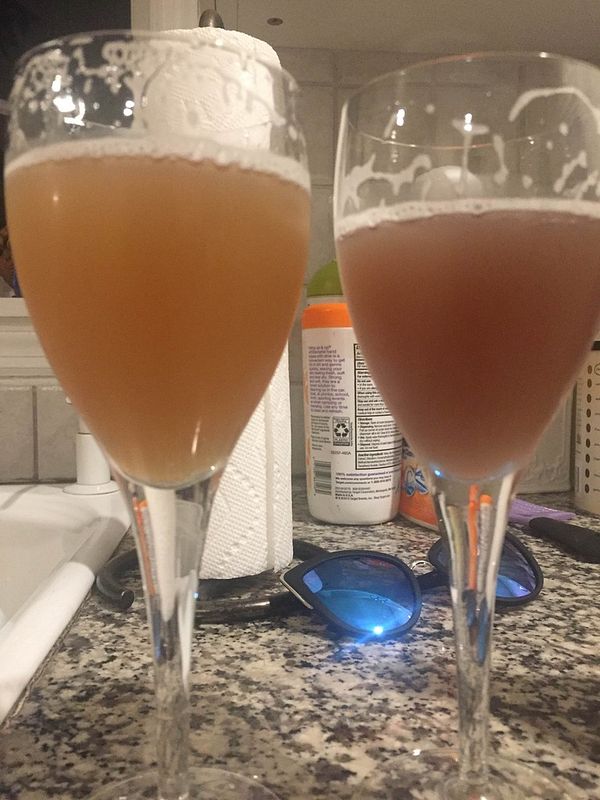inkman15
Well-Known Member
I've been brewing for about 5 years now and recently I've hit a streak of oxidized IPAs when bottling. Everything tastes great at bottling day but after 3 or so weeks in the bottle, my hoppy masterpieces turn into purple/brownish messes that have lost their spark.
After the last oxidized batch, I kegged one instead with much better results. However, I'm in the midst of helping a friend brew for his wedding and his venue will allow bottles but not kegs. I did the same thing for my wedding, so I don't mind the chore of bottling a ton of beers. We did an initial test batch and while the first bottle I had tasted/looked good, after 2 more weeks, it darkened considerably and took on the purple hue.
Given all of this, I can pretty much pinpoint that something is going on during the bottling process and not during the transferring to the bottling bucket since I used the same siphon/hosing to transfer the kegged batch. When I bottle, I attach a spring-loaded bottling wand to the bucket's spigot using about 2 inches of tubing. So, a couple of questions:
The picture below is a side-by-side of my kegged batch (left) and the oxidized one (right). Any thoughts on ways to troubleshoot this? Very disheartening and I need to sort this issue out before I bottle upwards of 200 oxidized beers!

After the last oxidized batch, I kegged one instead with much better results. However, I'm in the midst of helping a friend brew for his wedding and his venue will allow bottles but not kegs. I did the same thing for my wedding, so I don't mind the chore of bottling a ton of beers. We did an initial test batch and while the first bottle I had tasted/looked good, after 2 more weeks, it darkened considerably and took on the purple hue.
Given all of this, I can pretty much pinpoint that something is going on during the bottling process and not during the transferring to the bottling bucket since I used the same siphon/hosing to transfer the kegged batch. When I bottle, I attach a spring-loaded bottling wand to the bucket's spigot using about 2 inches of tubing. So, a couple of questions:
When I bottle, I often find that once the beer has reached the top of the bottle, there are bubbles.Should there be none at all?
- Also, should the top of the bottling wand be flush against the end of the spigot, or should there be any bit of hosing between the two? Does that matter?
The picture below is a side-by-side of my kegged batch (left) and the oxidized one (right). Any thoughts on ways to troubleshoot this? Very disheartening and I need to sort this issue out before I bottle upwards of 200 oxidized beers!



